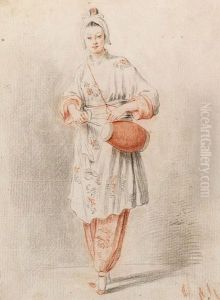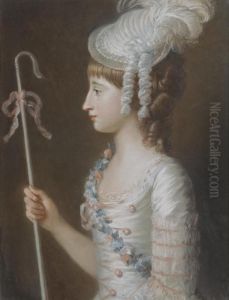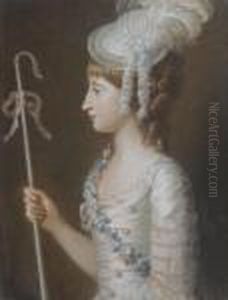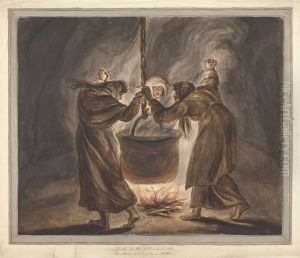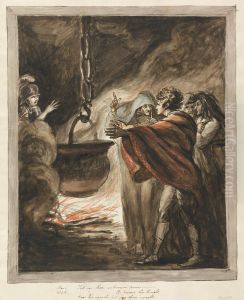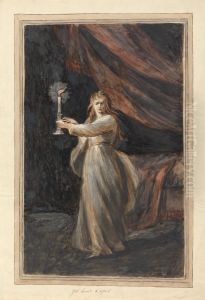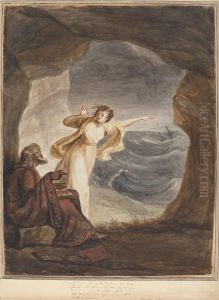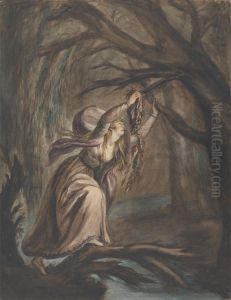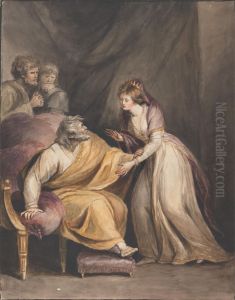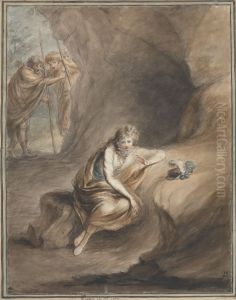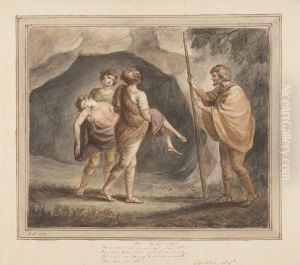Mary Hoare Paintings
Mary Hoare was an English artist born in 1744 into an artistic family. She was the daughter of the landscape painter George Lambert, who was considered a pioneer in British landscape painting and a founder of the Royal Academy. Mary Hoare received her early training from her father and was also influenced by other prominent artists of the time.
Mary Hoare is primarily known for her work in pastels, a medium that gained popularity in the 18th century for its vibrant colors and delicate textures. She became an accomplished pastellist, noted for her portraits that captured the grace and elegance of her subjects. Her style was typical of the rococo period, characterized by softness, lightness, and a focus on depicting the pleasantries of life.
Although women artists faced significant challenges in the professional art world during her time, Mary Hoare managed to achieve recognition for her work. She exhibited at the Free Society of Artists in London from 1761 to 1768, and her works were well-received by the public and critics alike.
Despite her early success, Mary Hoare's career was somewhat overshadowed by her marriage to the Irish painter and engraver Michael Hoare in 1768. After her marriage, she seems to have painted less and her presence in the art world diminished. Nevertheless, her existing work, which includes portrait miniatures and larger pastel portraits, contributes valuable insight into the artistic style and social customs of the 18th century.
Mary Hoare's life after the peak of her artistic career is not well-documented, but it is known that she lived until the age of 76, passing away in 1820. Her contributions to the art of pastel painting continue to be appreciated by art historians and collectors, and her works can be found in various art collections, including those of museums and galleries that specialize in 18th-century art.
